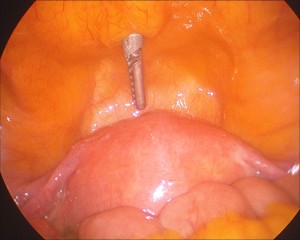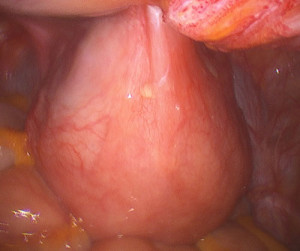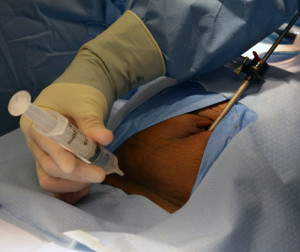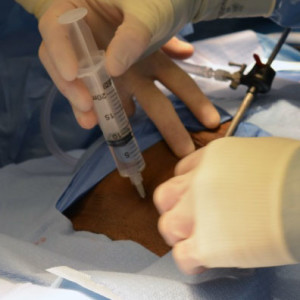Tubal Reversal Insurance
Screening Laparoscopy Is A Great Insurance Policy
A screening laparoscopy provides a nice tubal reversal insurance policy if fallopian tubes cannot be repaired.
A Personal Choice is the only center offering this helpful procedure. You should consider a screening laparoscopy a tubal reversal insurance policy.
We can repair tubes in most of our patients, but for those patients who want more of a guarantee or who cannot obtain tubal ligation records, a screening laparoscopy procedure is a simple procedure to evaluate the health of the tubes.
If you have scar tissue then laparoscopy can increase the odds of successful surgery.
Screening Laparoscopy: Unique tubal reversal insurance policy
A screening laparoscopy is a unique tubal reversal insurance policy to consider. We use screening laparoscopy in two ways:
- Determining if the remaining tubes are healthy enough for repair
- Diagnosing uterine scar tissue from prior C-sections
If the tubes are healthy and there is no scar tissue then tubal reversal can safely proceed.
If the tubes are not healthy then the surgery can be stopped and a refund of the surgical fee can be provided.
If there is significant scar tissue then an incision can be made which avoids the scar tissue.
Screening laparoscopy: Detecting severe scar tissue
Screening laparoscopy is performed under general anesthesia. The laparoscopic camera is inserted through a small incision in the umbilicus (belly button).
This allows for close examination of the pelvis, the remaining tubal segments, and for C-section scar tissue.
This photo illustrates how the uterus can be attached to the abdominal wall from a prior C-section.
The fallopian tubes are not visible in this photo because the tubes are behind the uterus.
It is important to understand uterine scar tissue is difficult to detect before surgery and can only be diagnosed during surgery.
If there is significant scar tissue then a needle localization technique is used to determine the best place to make the tubal reversal incision.
Needle localization during screening laparoscopy
Needle localization helps determine the best place to make the abdominal incision. The best incision avoids significant scar tissue and increases the chance of successful tubal repair.
Under direct laparoscopic visualization a needle is inserted into the previous C-section incision to help determine if the densest scar tissue is in the path of the needle.
The photo on the left demonstrates insertion of the needle into the previous C-section incision. At the same time the internal laparoscopic photo on the right demonstrates the needle is not visible.
The needle is not visible because the needle is inside the densest area of scar tissue. In this patient it would not be wise to use the same incision because it would place us in the thickest part of the uterine adhesion. This would increase the risk of the surgery and also decrease the chance of successfully repairing both fallopian tubes.
Needle localization: Finding the best place for tubal reversal incision
A screening laparoscopy allows for more precise incision placement. This can make the difference between a successful reversal or a failed procedure.
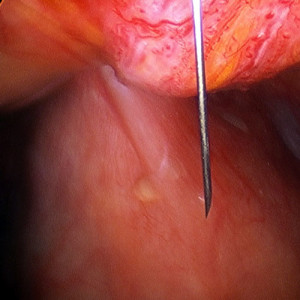
During laparoscopy needle is observed to be above the uterine adhesion. The is the better place to make a tubal reversal incision.
The photo on the left demonstrates the needle being inserted three inches above the previous C-section incision. The photo on the right demonstrates the needle exiting the abdominal wall well above the uterine adhesion. This is a better place to make an incision.
Making an incision in this area will allow for an easier tubal reversal surgery by avoiding uterine scar tissue and increasing the chance both tubes can be repaired.
Screening laparoscopy: Helpful tubal reversal insurance
We can repair the tubes in about 98% of patients. If the tubes cannot be repaired then screening laparoscopy allows patients to get a refund of their reversal surgery fee. If severe scar tissue is present, screening laparoscopy allows needle localization of the best place for a tubal reversal incision and increases the chance both tubes can be repaired.
More information: Who should consider screening laparoscopy?
Women who are unable to obtain their records or have a history of prior C-section should consider laparoscopy as a helpful tubal reversal insurance policy.

